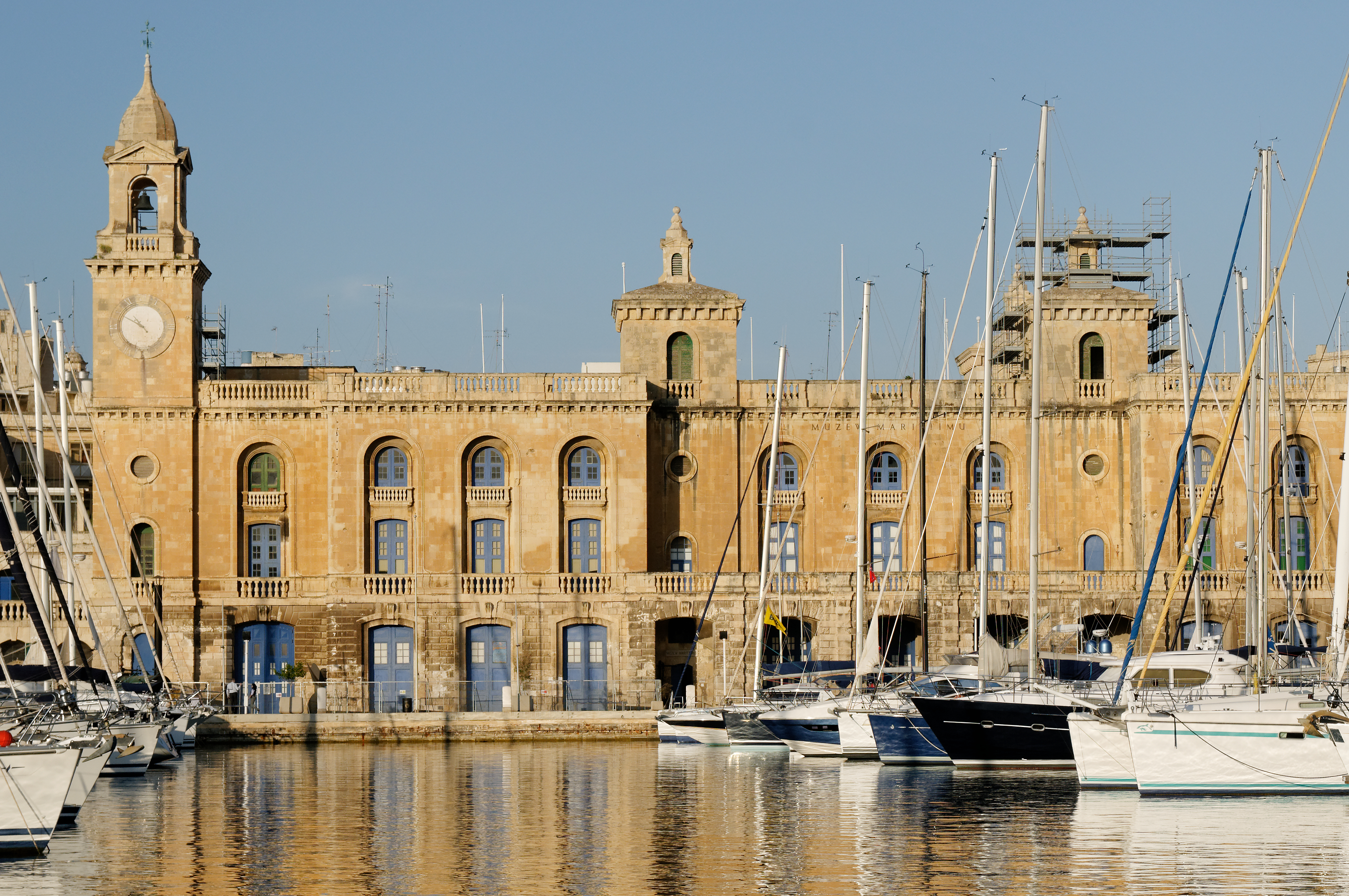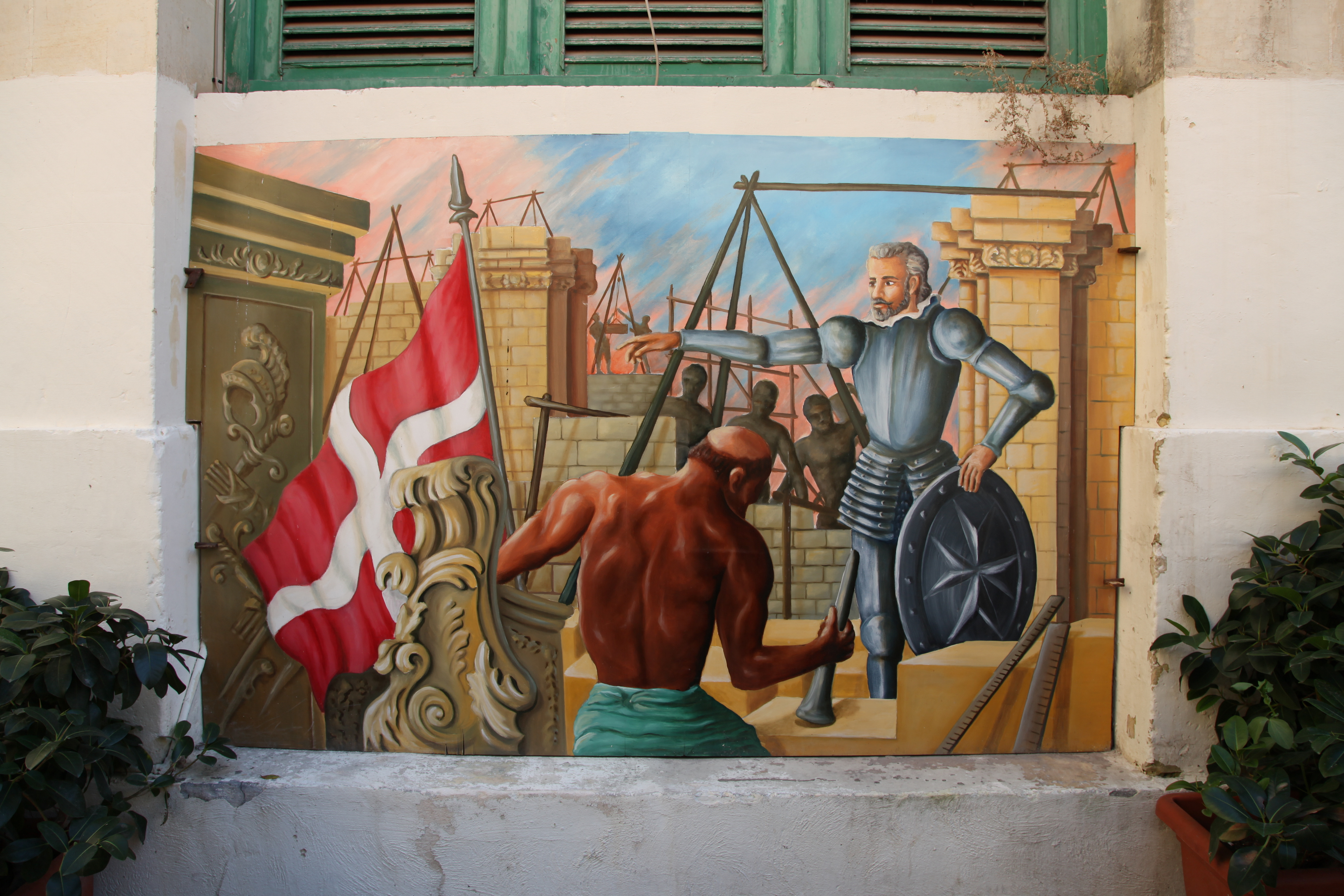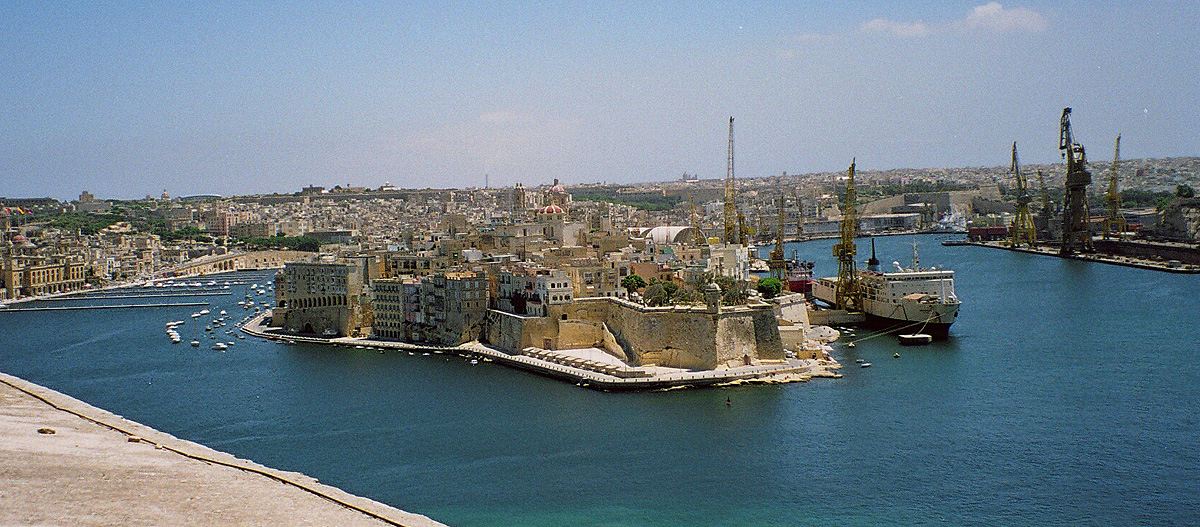|
William Scamp
William Scamp (5 June 1801 – 13 January 1872) was an English architect and engineer. After working on the reconstruction of Windsor Castle to designs of Sir Jeffry Wyatville, he was employed by the Admiralty from 1838 to his retirement in 1867. Throughout his career of almost three decades, Scamp designed naval facilities in Britain, Malta, Gibraltar and Bermuda. Scamp's early works from the 1840s include a dockyard and the Royal Naval Bakery in Malta. During his stay in Malta, he oversaw the construction of St Paul's Pro-Cathedral, making significant alterations to the building in the process. His most notable works in Britain were extensions of the Chatham and Portsmouth Dockyards carried out from the 1860s to the 1880s. Life Scamp was born on 5 June 1801 in the village of Georgeham in North Devon, and he was the son of a maltster and shipowner. He was interested in geometry and surveying from a young age, and he taught himself since his father's death prevented him from ... [...More Info...] [...Related Items...] OR: [Wikipedia] [Google] [Baidu] |
Georgeham
Georgeham is a village and civil parish near Croyde, in North Devon. The appropriate electoral ward is termed Georgeham and Mortehoe with total population at the 2011 census of 3,748. Georgeham is a historic village lying close to some of the most dramatic beaches of the North Devon Coast Area of Outstanding Natural Beauty which are flanked by the rocky headlands of Baggy Point and Saunton Down, although there are no views of the sea or coastline from the village itself. The character of the village is typically rural. The majority of the historic development in the village is east and south-west of the church. The village is also characterized by thatched cottages arranged in an irregular fashion along narrow lanes. There is a Victorian village school, a medieval church and two 17th Century public houses, the main one in the middle of the village, The King's Arms, and another one up a small lane, The Rock. Pronunciation is a controversial issue. Traditionalists maintain t ... [...More Info...] [...Related Items...] OR: [Wikipedia] [Google] [Baidu] |
Ilfracombe
Ilfracombe ( ) is a seaside resort and civil parishes in England, civil parish on the North Devon coast, England, with a small harbour surrounded by cliffs. The parish stretches along the coast from the 'Coastguard Cottages' in Hele Bay toward the east and along the Torrs to Lee Bay toward the west. The resort is hilly and the highest point within the parish boundary is 'Hore Down Gate', inland and 860 feet (270 m) above sea level. The landmark of Hillsborough, Devon, Hillsborough Hill dominates the harbour and the site of an Iron Age fortified settlement. In the built environment, the architectural-award-winning Landmark Theatre, Devon, Landmark Theatre has a distinctive double-conical design. The 13th-century parish church, Holy Trinity Church, Ilfracombe, Holy Trinity, and the St Nicholas's Chapel (a lighthouse) on Lantern Hill, have been joined by Damien Hirst's statue of ''Verity (statue), Verity'' as points of interest. History Ilfracombe has been settled since the ... [...More Info...] [...Related Items...] OR: [Wikipedia] [Google] [Baidu] |
Sheerness
Sheerness () is a port town and civil parish beside the mouth of the River Medway on the north-west corner of the Isle of Sheppey in north Kent, England. With a population of 13,249, it is the second largest town on the island after the nearby town of Minster, Swale, Minster which has a population of 16,738. Sheerness began as a fort built in the 16th century to protect the River Medway from naval invasion. In 1665 plans were first laid by the Navy Board for Sheerness Dockyard, a facility where warships might be provisioned and repaired. The site was favoured by Samuel Pepys, then Clerk of the Acts of the navy, for shipbuilding over Chatham, Medway, Chatham inland. After the raid on the Medway in 1667, the older fortification was strengthened; in 1669 a Royal Navy dockyard was established in the town, where warships were stocked and repaired until its closure in 1960. Beginning with the construction of a pier and a promenade in the 19th century, Sheerness acquired the added at ... [...More Info...] [...Related Items...] OR: [Wikipedia] [Google] [Baidu] |
Woolwich
Woolwich () is a town in South London, southeast London, England, within the Royal Borough of Greenwich. The district's location on the River Thames led to its status as an important naval, military and industrial area; a role that was maintained throughout the 16th to 20th centuries. After several decades of economic hardship and social deprivation, the area now has several large-scale urban renewal projects. Geography Woolwich is situated from Charing Cross. It has a long frontage to the south bank of the River Thames. From the riverside it rises up quickly along the northern slopes of Shooter's Hill towards the common, at and the ancient London–Dover Road, at . The Woolwich (parish), ancient parish of Woolwich, more or less the present-day Wards and electoral divisions of the United Kingdom, wards Woolwich Riverside and Woolwich Common, comprises . This included North Woolwich, which is now part of the London Borough of Newham. The ancient parishes of Plumstead and E ... [...More Info...] [...Related Items...] OR: [Wikipedia] [Google] [Baidu] |
Deptford
Deptford is an area on the south bank of the River Thames in southeast London, in the Royal Borough of Greenwich and London Borough of Lewisham. It is named after a Ford (crossing), ford of the River Ravensbourne. From the mid 16th century to the late 19th it was home to Deptford Dockyard, the first of the Royal Navy Dockyard, Royal Dockyards. This was a major shipbuilding dock and attracted Peter the Great to come and study shipbuilding. Deptford and the docks are associated with the knighting of Francis Drake, Sir Francis Drake by Elizabeth I, Queen Elizabeth I aboard the ''Golden Hind'', the legend of Walter Raleigh, Sir Walter Raleigh laying down his cape for Elizabeth, James Cook, Captain James Cook's third voyage aboard HMS Resolution (1771), HMS ''Resolution'', and the mysterious apparent murder of Christopher Marlowe in a house along Deptford Strand. Though Deptford began as two small communities, one at the ford, and the other a fishing village on the Thames, Deptfo ... [...More Info...] [...Related Items...] OR: [Wikipedia] [Google] [Baidu] |
British Empire
The British Empire comprised the dominions, Crown colony, colonies, protectorates, League of Nations mandate, mandates, and other Dependent territory, territories ruled or administered by the United Kingdom and its predecessor states. It began with the English overseas possessions, overseas possessions and trading posts established by Kingdom of England, England in the late 16th and early 17th centuries, and colonisation attempts by Kingdom of Scotland, Scotland during the 17th century. At its height in the 19th and early 20th centuries, it became the List of largest empires, largest empire in history and, for a century, was the foremost global power. By 1913, the British Empire held sway over 412 million people, of the world population at the time, and by 1920, it covered , of the Earth's total land area. As a result, Westminster system, its constitutional, Common law, legal, English language, linguistic, and Culture of the United Kingdom, cultural legacy is widespread. ... [...More Info...] [...Related Items...] OR: [Wikipedia] [Google] [Baidu] |
Candelabra
A candelabrum (plural candelabra but also used as the singular form) is a candle holder with multiple arms. "Candelabra" can be used to describe a variety of candle holders including chandeliers. However, candelabra can also be distinguished as branched candle holders that are placed on a surface such as the floor, stand, or tabletop. The chandeliers, on the other hand, are hung from the ceiling. The Romans used the term to describe a form of ornamental lighting, which may be a tall stand that supports a lamp. In Judaism, the menorah and hanukkiah are special kinds of candelabra. Candelabra are also used in churches, in ceremonies such as Tenebrae, in certain Eastern Catholic and Eastern Orthodox Church liturgy such as the dikirion and trikirion. Candelabra in the form of branched candlesticks also became popular in homes as decorative lighting. In modern times, electricity has largely relegated candleholders to decorative use in homes. The interior designers nowadays conti ... [...More Info...] [...Related Items...] OR: [Wikipedia] [Google] [Baidu] |
Adelaide Of Saxe-Meiningen
Adelaide of Saxe-Meiningen (Adelaide Amelia Louise Theresa Caroline; 13 August 1792 – 2 December 1849) was Queen of the United Kingdom of Great Britain and Ireland and Queen of Hanover from 26 June 1830 to 20 June 1837 as the wife of King William IV. Adelaide was the daughter of George I, Duke of Saxe-Meiningen, and Luise Eleonore of Hohenlohe-Langenburg. Adelaide, the capital city of South Australia, is named after her. Early life Adelaide was born on 13 August 1792 at Meiningen, Thuringia, Germany, the eldest child of Georg I, Duke of Saxe-Meiningen, and Luise Eleonore, daughter of Christian Albrecht, Prince of Hohenlohe-Langenburg. She was baptised at the castle chapel on 19 August and was titled ''Princess Adelaide of Saxe-Meiningen, Duchess in Saxony'' with the style ''Serene Highness''. Her godparents numbered 21, including her mother, the Holy Roman Empress, the Queen of Naples and Sicily, the Crown Princess of Saxony, the Duchess of Saxe-Gotha-Altenburg, ... [...More Info...] [...Related Items...] OR: [Wikipedia] [Google] [Baidu] |
Valletta
Valletta ( ; , ) is the capital city of Malta and one of its 68 Local councils of Malta, council areas. Located between the Grand Harbour to the east and Marsamxett Harbour to the west, its population as of 2021 was 5,157. As Malta’s capital city, it is a commercial centre for shopping, bars, dining, and café life. It is also the southernmost capital of Europe, and at just , it is the European Union's smallest capital city. Valletta's 16th-century buildings were constructed by the Hospitaller Malta, Knights Hospitaller. The city was named after the Frenchman Jean Parisot de Valette, who succeeded in defending the island against an Ottoman invasion during the Great Siege of Malta. The city is Baroque architecture, Baroque in character, with elements of Mannerist architecture#Mannerist architecture, Mannerist, Neoclassical architecture, Neo-Classical and Modern architecture, though the Second World War left major scars on the city, particularly the destruction of the Royal Oper ... [...More Info...] [...Related Items...] OR: [Wikipedia] [Google] [Baidu] |
Birgu
Birgu ( , ), also known by its title Città Vittoriosa ('Victorious City'), is an old Fortifications of Birgu, fortified city on the south side of the Grand Harbour in the Port Region, Malta, Port Region of Malta. The city occupies a promontory of land with Fort Saint Angelo at its head and the city of Cospicua at its base. Birgu is ideally situated for safe anchorage, and over time it has developed a very long history with maritime, mercantile and military activities. Birgu is a very old locality with its origins in medieval times. Prior to the establishment of Valletta as capital and main city of Malta, military powers that wanted to rule the Maltese islands would need to obtain control of Birgu due to its significant position in the Grand Harbour. In fact, it served as the base of the Knights Hospitaller, Order of Saint John and ''de facto'' capital city of Malta from 1530 to 1571. Birgu is well known for its vital role in the Great Siege of Malta of 1565. In the early 20th c ... [...More Info...] [...Related Items...] OR: [Wikipedia] [Google] [Baidu] |
Cospicua
Cospicua (Italian language, Italian) or Bormla (Maltese language, Maltese, ), occasionally also known by the Latin language, Latin name Cottonera, is a double-fortified harbour city in the Port Region, Malta, Port Region of Malta. It served as the principal port of Phoenician Malta and, through ancient Greek language, Greek, Latin language, Latin, and Arabic language, Arabic, may have given its name to the island and country. Along with Birgu and Senglea, it is one of the Three Cities (Malta), Three Cities located within the Grand Harbour to the east of the capital city Valletta. With a population of 5,395 as of March 2014, it is the most dense city of the Three Cities. Locals are known for their Cottonera Dialect, Cottonera dialect. Names The ancient Phoenician language, Phoenician name ''Maleth'' meant "refuge" or "port", cognate with Hebrew language, Hebrew ''malat'' (, "escape"). The ancient Greek language, Greek () and Latin language, Latin probably derived from this topon ... [...More Info...] [...Related Items...] OR: [Wikipedia] [Google] [Baidu] |
Malta Dockyard
Malta Dockyard was an important naval base in the Grand Harbour in Malta in the Mediterranean Sea. The infrastructure which is still in operation is now operated by Palumbo Shipyards. History Pre-1800 The Knights of Malta established dockyard facilities within the Grand Harbour to maintain their fleet of galleys. These were spread between the cities of Senglea, Cospicua and Vittoriosa. 19th century When Malta became a British protectorate in 1800, these facilities were inherited, and gradually consolidated, by the Royal Navy. With the loss of Menorca, Malta swiftly became the Navy's principal Mediterranean base. The Royal Navy Dockyard was initially located around Dockyard Creek in Bormla, and occupied several of the dockyard buildings formerly used by the Knights of Malta. By 1850 the facilities included storehouses, a Ropewalk, ropery, a small steam factory, Victualling Commissioners, victualling facilities, houses for the officers of the Yard, and most notably a dry dock&n ... [...More Info...] [...Related Items...] OR: [Wikipedia] [Google] [Baidu] |











